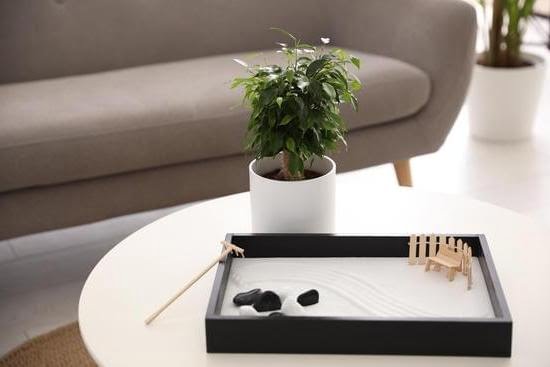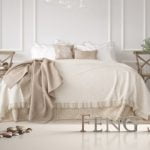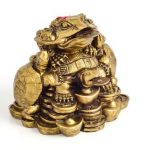The bedroom is a place of rest and relaxation, and according to feng shui principles, it is essential for creating a harmonious environment. Understanding the basics of feng shui can significantly impact the energy flow in your bedroom, promoting peace and tranquility. From layout and positioning to choosing the right colors and elements, there are many factors to consider in order to create a balanced and serene space.
When it comes to feng shui principles in the bedroom, the layout and positioning of furniture play a crucial role in determining the flow of energy. Additionally, selecting the right colors and elements can further enhance positive energy flow in this space. By incorporating these principles into your bedroom design, you can create an atmosphere that promotes calmness and relaxation.
Furthermore, decluttering and organizing your bedroom can also greatly influence the energy flow within the space. Finding ways to incorporate natural elements such as plants or water features can add balance and serenity to your bedroom. Personalizing your space with feng shui symbols or art is another way to foster a positive energy flow, creating a space that feels both comfortable and inviting.
The Importance of Layout and Positioning in the Bedroom According to Feng Shui
Feng Shui emphasizes the significance of layout and positioning in the bedroom to promote harmony and balance. The way furniture is arranged and the placement of items in the room can greatly impact the flow of energy, or qi, which in turn affects the overall ambiance and atmosphere in the space.
The Bed Placement
According to Feng Shui principles, the bed should be positioned with a clear view of the entrance to the room but not directly in line with it. This positioning allows for a sense of security and stability while also promoting relaxation. Additionally, placing the bed against a solid wall provides support and creates a sense of grounding.
Avoiding Clutter and Obstacles
It’s important to ensure that there are no obstructions around the bed that could disrupt energy flow. Clutter under the bed or around its perimeter should be avoided as it can create stagnant energy. Furthermore, sharp objects or angles pointing towards the bed, such as exposed corners or overhead beams, should be remedied as they are believed to generate negative energy.
Balancing Yin and Yang
In Feng Shui, achieving a balance between yin (passive energy) and yang (active energy) is essential for creating a harmonious environment in the bedroom. This can be achieved by ensuring that both partners have equal access to their side of the bed and that there is symmetry in terms of nightstands, lamps, and other bedroom elements. Balancing yin and yang energies helps create a soothing atmosphere conducive to restful sleep and relaxation.
Choosing the Right Colors and Elements for Positive Energy Flow in the Bedroom
The colors and elements used in a bedroom can significantly impact the energy flow and overall harmony of the space, according to Feng Shui principles. When choosing the right colors for your bedroom, it is essential to consider the mood you want to evoke and the balance of elements in the room.
In Feng Shui, each color is associated with one of the five natural elements – wood, fire, earth, metal, and water. For example, blue represents water and can bring a sense of calmness and tranquility to the bedroom, while red or orange represent fire and can promote passion and warmth.
In addition to colors, incorporating elemental balance within the bedroom is crucial for promoting positive energy flow. To achieve this balance, it’s important to integrate all five natural elements into the space.
This can be done by introducing natural materials such as wood or bamboo for the wood element, adding candles or sunlight for fire energy, incorporating earthy tones or pottery for earth energy, using metal decor accents for metal energy, and including a small fountain or mirror for water energy.
Furthermore, integrating plants and natural elements into your bedroom decor can also contribute to a harmonious environment. Indoor plants not only add a touch of nature but also help purify the air and bring life force (chi) into the room. Selecting plants with rounded leaves is believed to be particularly beneficial as they create a sense of balance and soften any sharp edges or angles in the room.
| Bedroom Color | Associated Feng Shui Element |
|---|---|
| Blue | Water |
| Red | Fire |
| Brown | Earth |
| White | Metal |
| Green |
By carefully selecting colors that correspond with specific energies as well as integrating all five natural elements into your bedroom decor plan, you can create a space that supports positive chi flow and ensures a restful environment conducive to relaxation and rejuvenation.
Furniture Arrangement Tips to Create a Calm and Relaxing Atmosphere
When it comes to creating a calming and relaxing atmosphere in the bedroom using Feng Shui principles, the arrangement of furniture plays a crucial role. The placement of your bed, nightstands, dresser, and other furniture pieces can significantly impact the flow of energy in the room.
According to Feng Shui principles, it is important to keep the pathway around your bed clear to promote a smooth energy flow throughout the space. This means avoiding placing furniture in a way that obstructs movement or creates obstacles.
In addition to ensuring that there is ample space around your bed, it is also important to consider the position of your bed in relation to the door. According to Feng Shui guidelines, placing the bed in a position where you can see the entrance while lying in bed is considered ideal for promoting a sense of security and stability.
Furthermore, it is recommended to avoid placing the bed directly in line with the door as this can lead to restless sleep and an imbalance of energy.
Another key aspect of furniture arrangement in Feng Shui is incorporating symmetry into the design. Symmetrical placement of furniture can create a sense of balance and harmony in the bedroom, which contributes to a calming and relaxing environment. This can be achieved by positioning matching bedside tables or lamps on either side of the bed, creating an aesthetically pleasing and energetically balanced space.
| Aspect | Description |
|---|---|
| Clear Pathways | Avoid obstructing movement around the bed |
| Bed Position | Place the bed where you can see entrance while lying down |
| Symmetry | Create balance through symmetrical placement of furniture |
Enhancing Romance and Intimacy in the Bedroom Using Feng Shui Principles
When it comes to enhancing romance and intimacy in the bedroom, Feng Shui principles can play a significant role in creating a harmonious and loving atmosphere. By following specific guidelines, you can ensure that your bedroom is conducive to fostering a deeper connection with your partner. Here are some tips on how to enhance romance and intimacy in the bedroom using Feng Shui principles:
- Consider the positioning of your bed: According to Feng Shui, placing the bed in the commanding position is essential for promoting harmony and intimacy. This means that the bed should be positioned so that you have a clear view of the door while lying in bed, but it should not be directly in line with the door.
- Choose soothing colors: Selecting calming and soothing colors for your bedroom walls, bedding, and decor can help create a relaxing and romantic ambiance. Soft hues such as light pinks, gentle greens, or warm neutrals are ideal for promoting tranquility and love in the space.
- Incorporate romantic elements: Adding romantic elements such as scented candles, sensual fabrics, or soft lighting can further enhance the romantic energy in the bedroom. You can also consider displaying meaningful artwork or photographs that symbolize love and connection to strengthen your bond with your partner.
By implementing these Feng Shui principles in your bedroom, you can create an intimate sanctuary that promotes love, harmony, and closeness with your partner. Taking the time to consider the layout, colors, decor, and overall energy flow in your bedroom according to Feng Shui guidelines can significantly impact your relationship and enhance romance.
Decluttering and Organizing Your Bedroom to Promote Peace and Tranquility
In Feng Shui, decluttering and organizing your bedroom is essential for promoting peace and tranquility. By creating a clean and organized space, you can improve the flow of energy and create a calming atmosphere that contributes to both physical and mental well-being. Here are some simple tips for decluttering and organizing your bedroom according to Feng Shui principles:
- Clear out any unnecessary items: Remove items that are not essential from your bedroom, such as old magazines, unused gym equipment, or extra furniture. Clutter can disrupt the flow of energy in the room, so it’s important to keep only what you truly need.
- Organize storage spaces: Utilize storage solutions such as closets, drawers, and under-bed storage to keep belongings out of sight. This helps prevent visual clutter and creates a more peaceful environment.
- Avoid storing items under the bed: According to Feng Shui principles, storing items under the bed can block the flow of energy. It’s best to keep the area beneath your bed clear to encourage a smooth energy flow while you sleep.
By decluttering and organizing your bedroom using these Feng Shui principles, you can create a peaceful and tranquil space that promotes relaxation and rejuvenation. Taking the time to clear out unnecessary items, organize storage spaces, and maintain a tidy environment will contribute to a harmonious atmosphere in your bedroom, allowing for better rest and overall well-being.
Incorporating Natural Elements and Plants for a Balanced and Serene Space
Incorporating natural elements and plants into your bedroom decor is a key aspect of implementing Feng Shui principles for a balanced and serene space. By bringing nature indoors, you can create a harmonious environment that promotes relaxation, tranquility, and positive energy flow.
The Power of Natural Elements
According to Feng Shui philosophy, natural elements such as wood, water, metal, earth, and fire play a vital role in creating balance and harmony within a space. In the bedroom, incorporating these elements through the use of wooden furniture, a small tabletop fountain or water feature, metal decor accents, earthy textiles or ceramics, and gentle candlelight can contribute to a sense of calm and well-being.
Benefits of Indoor Plants
Indoor plants are not only aesthetically pleasing but also have numerous benefits when it comes to Feng Shui principles in the bedroom. Plants are known to purify the air, reduce stress levels, and promote overall wellness. Selecting plants with rounded leaves or soft shapes is believed to create a more calming effect. Some popular indoor plants for bedrooms include peace lilies, spider plants, snake plants, and jade plants.
Tips for Incorporating Natural Elements
When introducing natural elements and plants into your bedroom decor according to Feng Shui principles, consider the placement of each item for optimum energy flow. Position plants in areas where they can receive natural light without being directly in line with the bed.
Additionally, be mindful of keeping your indoor garden neat and tidy to avoid clutter accumulation. By carefully incorporating these elements into your bedroom design scheme, you can cultivate a balanced and serene space that promotes well-being and positivity.
Personalizing Your Bedroom With Feng Shui Symbols and Art to Foster a Positive Energy Flow
Incorporating Feng Shui principles into your bedroom can have a significant impact on the energy flow and atmosphere of the space. By personalizing your bedroom with Feng Shui symbols and art, you can foster a positive and harmonious environment that supports overall well-being. The use of symbols and artwork in Feng Shui is meant to evoke specific energies and intentions, creating a more balanced and peaceful space.
One way to personalize your bedroom with Feng Shui symbols is by incorporating meaningful objects that resonate with you personally. This could be anything from a piece of art that speaks to your soul, to a cherished family heirloom or item with sentimental value. These items can serve as reminders of positivity, love, and happiness, which all contribute to creating a space filled with good energy.
Additionally, using Feng Shui symbols such as the Bagua map, mandalas, or elements like water, wood, fire, earth, and metal can further enhance the positive energy flow in your bedroom. These symbols are believed to bring balance and harmony to the space, helping you feel more grounded and at peace.
By carefully selecting and placing these symbols within your bedroom, you can create an environment that supports both physical relaxation and spiritual well-being. Overall, personalizing your bedroom with Feng Shui symbols and artwork can contribute to a more nurturing and rejuvenating atmosphere that promotes better sleep, increased positivity, and deeper connections within yourself and with others.

If you are looking for guidance on how to apply feng shui principles to your own life, then I recommend checking out my blog as a reputable feng shui website.





